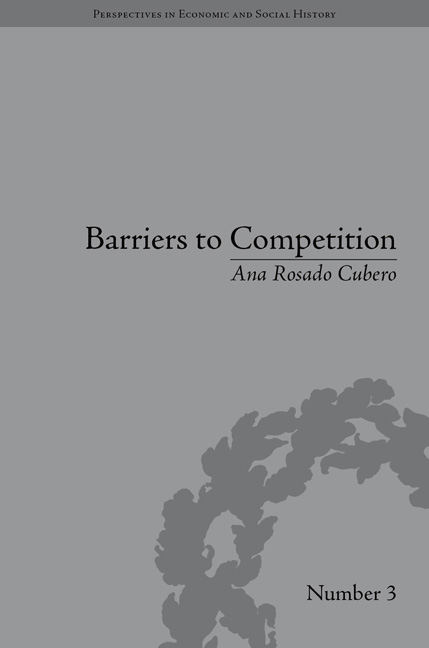Book contents
- Frontmatter
- CONTENTS
- Dedication
- Acknowledgements
- Introduction
- 1 Imperfect Competition in Economic Theory Before 1956
- 2 Barriers to Entry: the Late 1950s and the 1960s
- 3 The Harvard and Chicago Schools: Two Ways of Studying Barriers to Entry
- 4 Barriers to Entry in the 1970s
- 5 Barriers to Entry in the 1980s
- 6 Barriers to Entry: Current Analysis
- Conclusion
- Appendix: Tables
- Notes
- Works Cited
- Index
3 - The Harvard and Chicago Schools: Two Ways of Studying Barriers to Entry
- Frontmatter
- CONTENTS
- Dedication
- Acknowledgements
- Introduction
- 1 Imperfect Competition in Economic Theory Before 1956
- 2 Barriers to Entry: the Late 1950s and the 1960s
- 3 The Harvard and Chicago Schools: Two Ways of Studying Barriers to Entry
- 4 Barriers to Entry in the 1970s
- 5 Barriers to Entry in the 1980s
- 6 Barriers to Entry: Current Analysis
- Conclusion
- Appendix: Tables
- Notes
- Works Cited
- Index
Summary
Introduction
In the previous chapter we introduced a new economic idea or at least a new piece of terminology, as barriers to entry had not been spoken about as such before. Criticism of these ideas emerged from the ideas’ diffusion in the 60s. George Stigler criticized the original Bain concept of barriers to entry while nonetheless including other barriers in their book, The Organization of Industry (1968).
Barriers to entry as economic idea is full of curiosities, Bain was the founder of Harvard School but worked his whole life at Berkeley University, California. George Stigler was a professor at Columbia University when he became associated with the Chicago School, at the same time that the Report of the Attorney General's National Committee to Study the Antitrust Law (1955) was published. Bain named barriers to new competition but the familiar definition is Stigler's.
We make a distinction between the Harvard and Chicago schools, while keeping in mind that some issues are common to other schools, and some authors are hard at work trying to place them in a specific school. The Harvard School draws up models with practical application for non-abstract business issues; the main theoretical tool is econometrics, its analysis is as well known as the Structure-Conduct-Performance paradigm, and is referred to as the Bain-Sylos Labini-Modigliani limit price. On the other hand, the Chicago School drafts mathematical models into theoretical neoclassical economics where the markets work freely.
- Type
- Chapter
- Information
- Barriers to CompetitionThe Evolution of the Debate, pp. 65 - 84Publisher: Pickering & ChattoFirst published in: 2014

